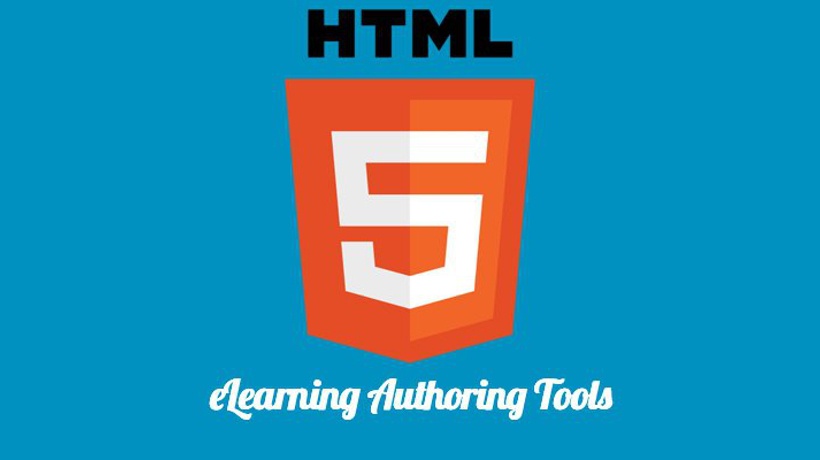What To Consider When Looking For The Best eLearning Authoring Tool: Technical Support, Stakeholders Feedback, Software Updates, License Types, And The Ultimate Checklist
In our two previous articles (check part 1 here and part 2 here) we discussed a variety of factors you should consider searching for the best eLearning authoring tool.
So far, we've explored:
- What makes up the price
- Traditional software vs Cloud
- Windows or Mac
- Learning curve
- LMS compatibility
- Games, video lectures, simulations
- Content library
- Mobile learning
In this article, the final part of this series, we’ll explore 5 factors more. Most importantly, we’ll share a checklist you can use at the end of the article. Let’s first see what you need to keep in mind regarding your tool’s technical support.
9. Technical Support
Situation: What happens when you face some technical difficulties while developing your eCourse? You want to be sure a vendor will provide prompt and competent assistance.
Salespeople may be really nice and client-oriented, but when a customer faces problems, that’s when a company’s true colors show. If a company can provide prompt and professional technical support, it saves the client a great deal of time and effort.
It’s always nice to have more than one way to contact tech support: by phone, email, or live chat.
Additionally, all essential instructions and guides should be provided on the vendor’s website, if a client needs off-hours assistance.
Install a trial version and try to contact tech support:
- How fast did you get a response from tech support?
- Did they help you solve the problem?
- How comfortable did you feel talking to the support engineers?
10. Feedback From Stakeholders
Situation: You want to send your eCourse to stakeholders to get their feedback. How is it possible?
Some vendors provide special cloud services. To share your content, you simply upload your project to a cloud storage, and it gets automatically converted to web format.
All you need to do is share a course link with stakeholders, and they will be able to open it on any device.
This way of sharing is good for many reasons. First, no additional software is required to access the course. Second, this allows stakeholders to check out how the course will work from the learner’s perspective.
In some cloud storages, users can leave comments right on the slides, which makes the review process more efficient.
Pricing and terms of such services may vary from vendor to vendor: some companies include cloud storage in the price, while others sell it separately. Perhaps the latter is more cost-effective, unless you’re planning to use the service all the time.
Questions to ask a vendor:
- Is there any cloud storage available for me? What are the terms of service?
- Does the service allow leaving comments?
- Is it possible to give private access?
11. Software Updates
Situation: You have decided to purchase a perpetual license, but it troubles you that the tool might get outdated over time.
The sphere of eLearning is young and constantly developing. New methods, technologies, and tricks are emerging every day. To keep up with the trends, new authoring features are constantly being implemented.
In fact, updates should be released at least twice a year. This means that a company is actively developing the product, fixing bugs, and adding few features. To find out about updates, check out the ‘What’s new’ section. Also, browse through blog posts and press releases to find out how often updates are released.
It’s always nice when a vendor listens to their customers. Find out if and how you can make feature requests. Maybe through a form, or by email?
If you already have a feature request, ask if they are planning to implement your feature. Some vendors agree to implement custom features for an additional charge.
Questions to ask a vendor:
- How often are updates released?
- How do I find out about available updates?
- Is it possible to implement a custom feature? How much is it going to cost?
12. License Types
Situation: You have decided on the tool, but you’re still unsure which license type is best suited to your needs.
Today there are 3 common license types:
- Perpetual license.
This type of license is more convenient to manage, because you only make a payment once, and you can use the tool forever. However, software becomes outdated rather quickly, and your perpetual license doesn’t guarantee access to new features.
For example, in 2010, when Steve Jobs officially declared that they “do not allow Flash on iPhones, iPods, and iPads,” it became a big issue for eLearning developers who were creating their eLearning content in Flash. That’s why most eLearning vendors have embraced HTML5 technology. - Subscription.
This license type allows you to use the tool for a defined length of time, for example, for the duration of a project. When the license expires, you will no longer be able to edit existing courses or create new ones. - Mixed model (perpetual license + updates + tech support).
The tool is yours forever, but you have to pay extra for maintenance. Maintenance usually includes advanced support services and upgrades. What’s great about this model is that you can use the tool as much as you want, and you only pay for upgrades and tech support if you need them.
Take a look at this comparison table:
| Mixed model (perpetual license + updates + tech support) | Perpetual license | Subscription | |
| Unlimited period of use | + | + | - |
| Minimum initial price | - | - | + |
| Availability of updates | + | - | + |
| Advanced support services | + | - | + |
| Recurring payments | + | - | + |
Questions to ask a vendor:
- Is the tool available by perpetual license or by subscription?
- Does the price include tech support?
- What level of support will I receive within my license?
13. Who Owns The Rights To The Content
Situation: Your eCourse is ready to go, and you would like to sell it online. But beforehand, you need to make sure that everything is 100% legal.
If you’re planning to sell courses, carefully study your license agreement with the authoring tool vendor. There are some freemium tools that allow users to create courses for free, but oblige them to contribute a fixed rate for each sale. Read your license agreement in detail, or contact the vendor about ownership rights.
Questions to ask a vendor:
- Does the license agreement allow selling my content online and under what conditions?
14. Checklist For Choosing The Right Authoring Tool
Check if your authoring tool meets these basic requirements for eLearning development. 20 out of 20 means you’ve found yourself a good authoring tool.
Quick Start
❏ It doesn’t take long to master the tool.
❏ A knowledge base is available with free video lessons and detailed guides. ❏ The vendor can provide individual training for my team.
Software Features
❏ I’ve explored the full list of features, and I realize how each feature may be useful for me.
❏ I can launch the tool on my platform (Windows or Mac).
❏ The tool generates courses that are compatible with my LMS.
❏ The tool supports universal eLearning standards: SCORM 1.2/2004, Tin Can, AICC.
❏ With the tool, I can create interactive eLearning content (quizzes, surveys, video lectures, dialogue simulations, etc.)
❏ The tool allows publishing fully-adaptive eCourses. Additional services
❏ A free app (Android or iOS) is available to take courses from mobile devices.
❏ App users can access courses offline.
❏ A special cloud storage is available to share courses and gather feedback.
❏ The tool includes a content library with templates, character sets, locations, objects, backgrounds, and buttons.
Friendly And Helpful Customer Service
❏ A company representative explained to me what’s included in the product price.
❏ I can choose a license type that best matches my requirements.
❏ I can contact technical support in multiple ways (by phone, email, or live chat)
and get a response within 2 hours.
❏ The vendor has tested the compatibility of the tool with my LMS.
❏ Product updates are released twice a year, or even more often.
Security And Rights Of Ownership
❏ Using the tool does not violate our corporate security policy.
❏ The vendor doesn’t claim to own the copyright to my content, and they don’t oblige users to pay royalties on sales.
If you want to learn more about finding the best tool for your needs, download the eBook 14 Things To Consider When Choosing The Right eLearning Authoring Tool.






